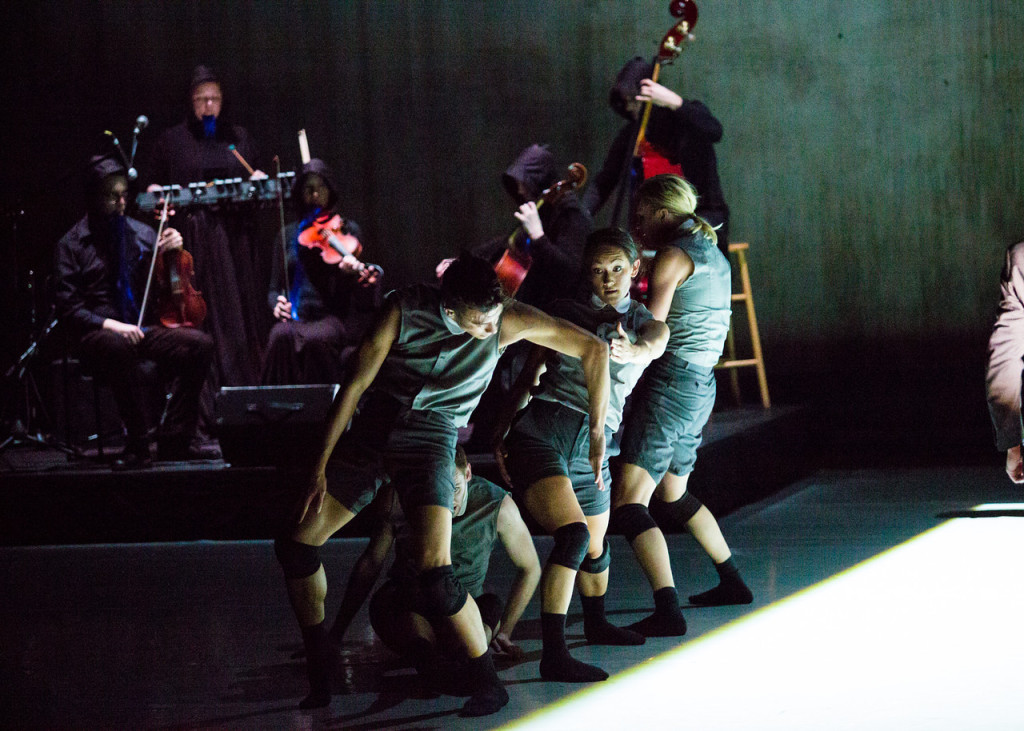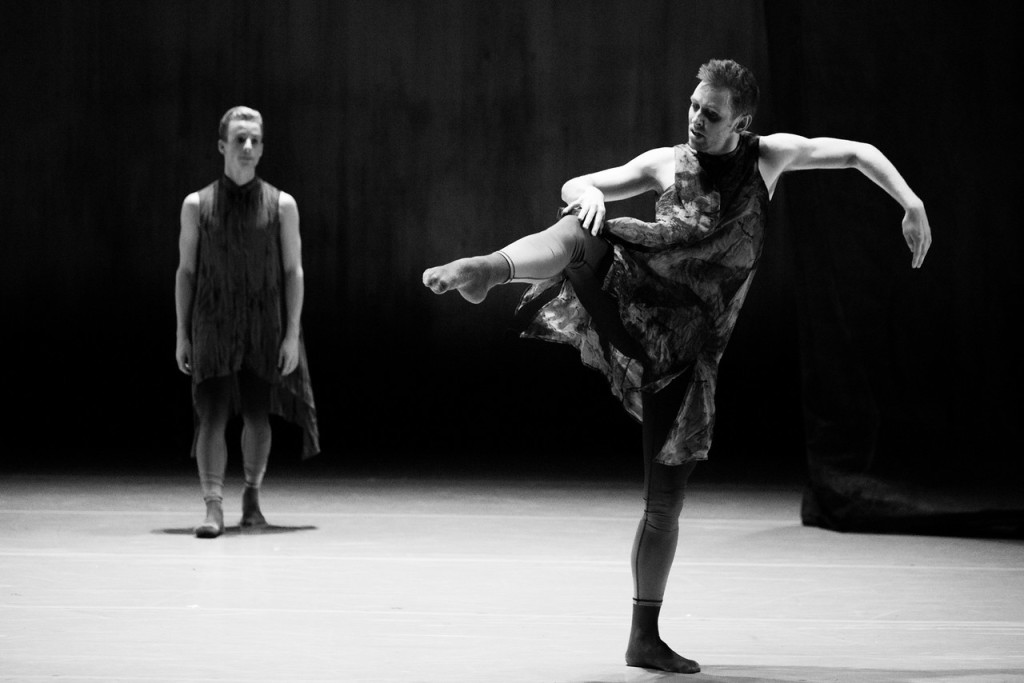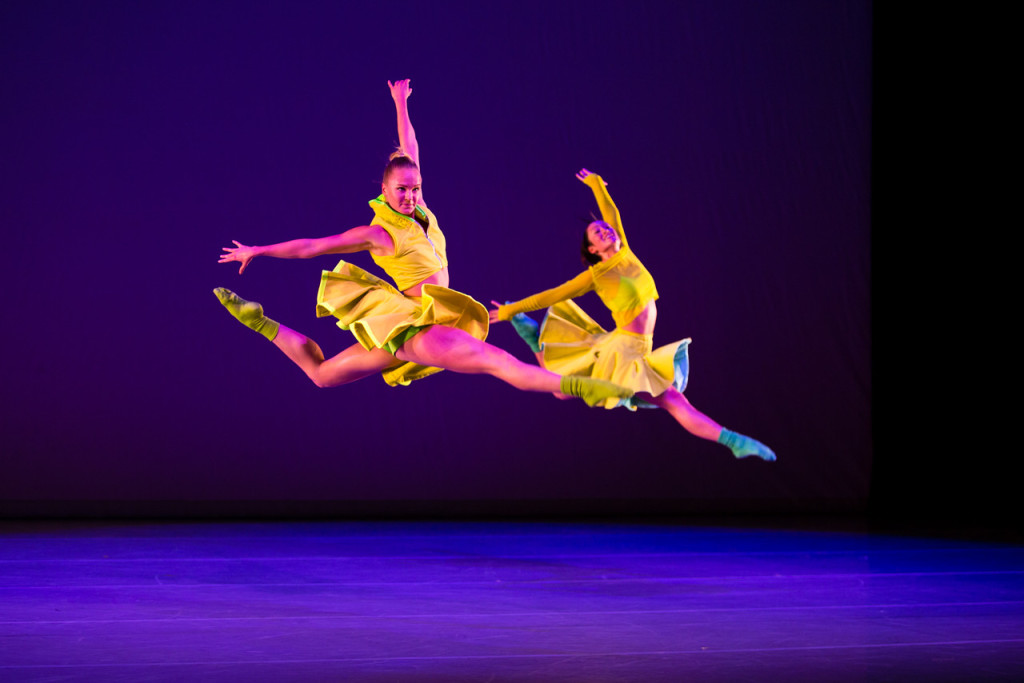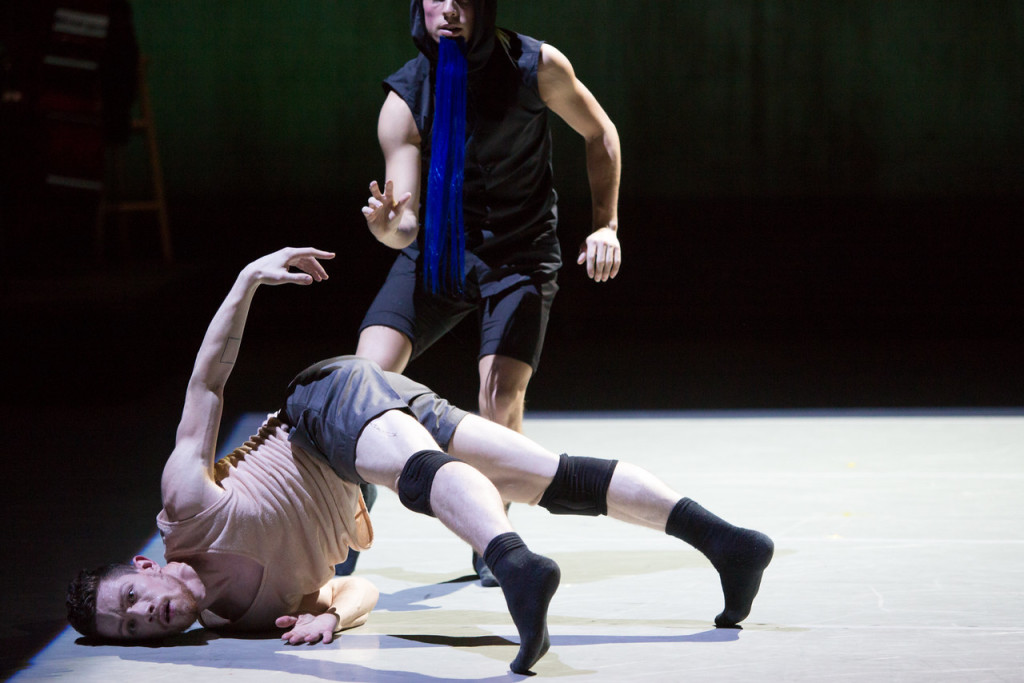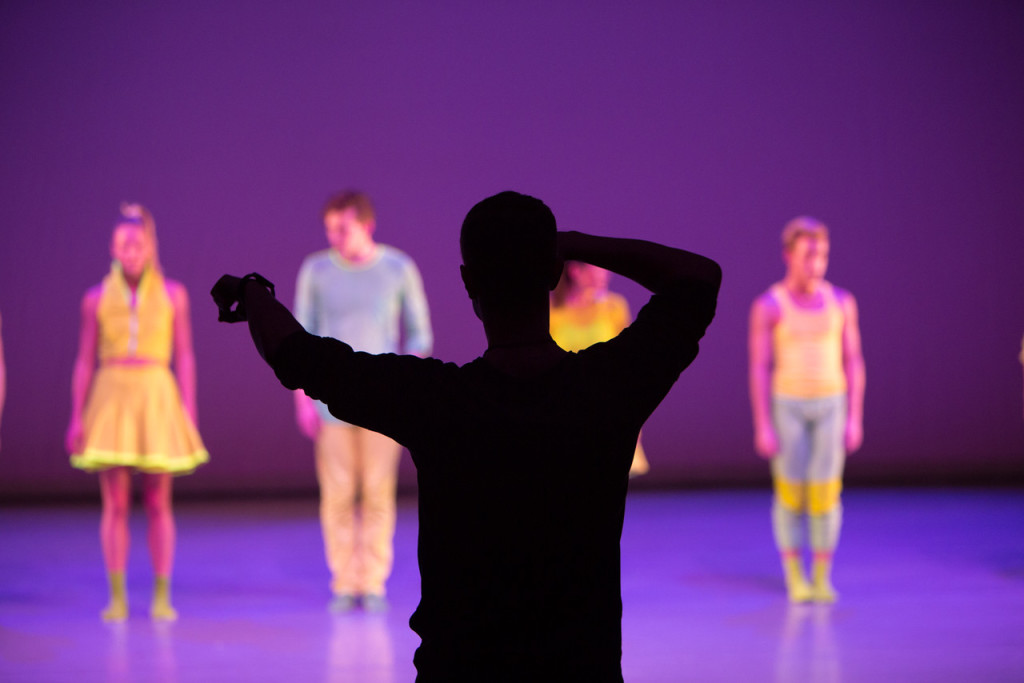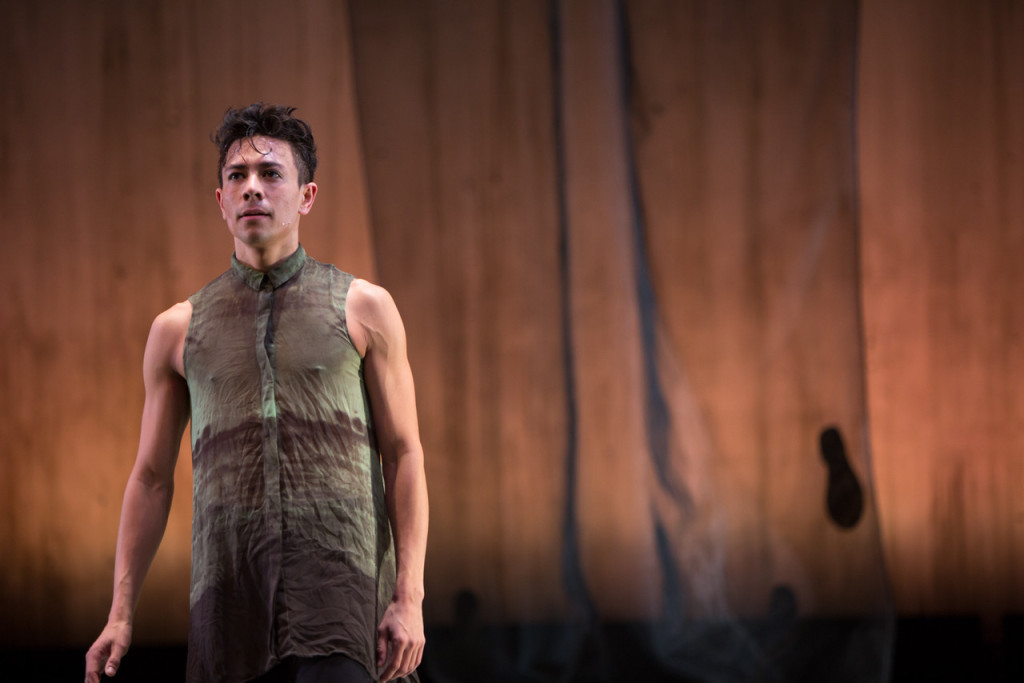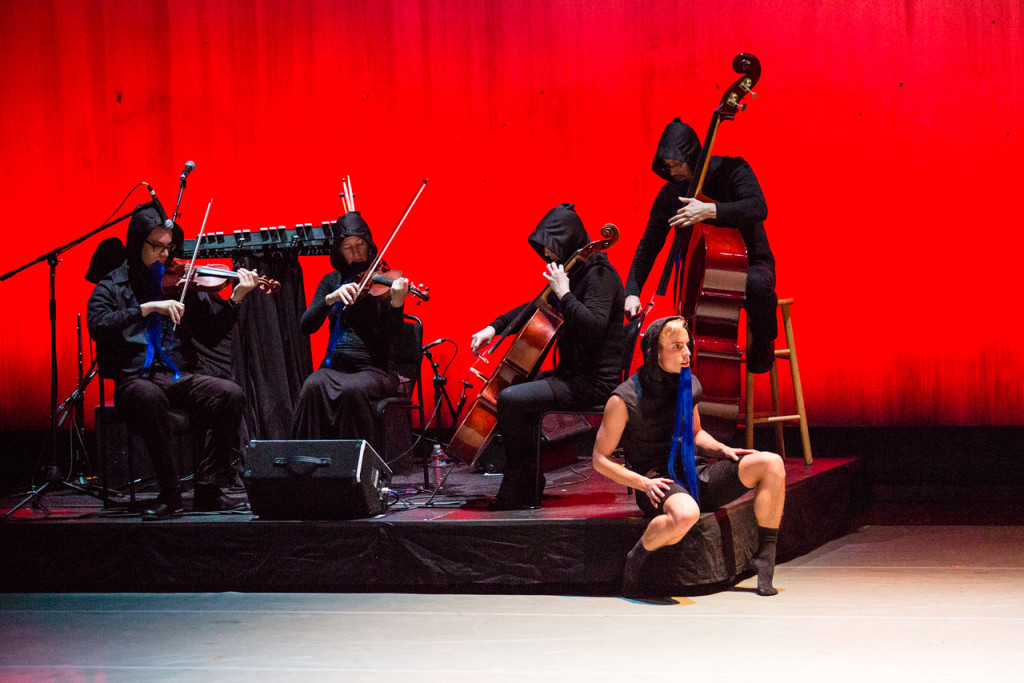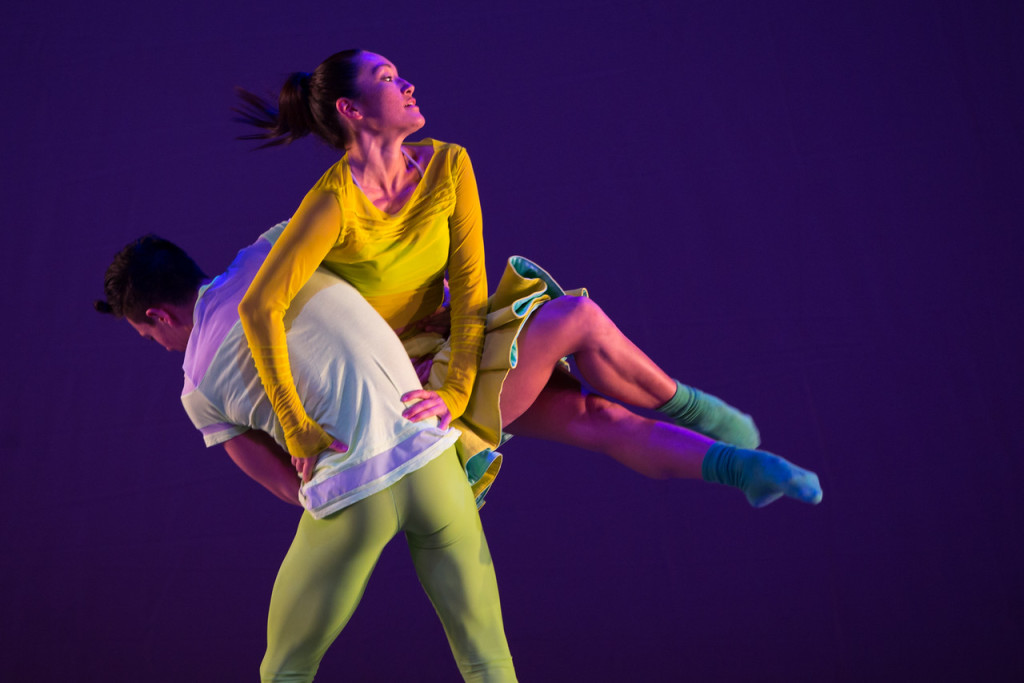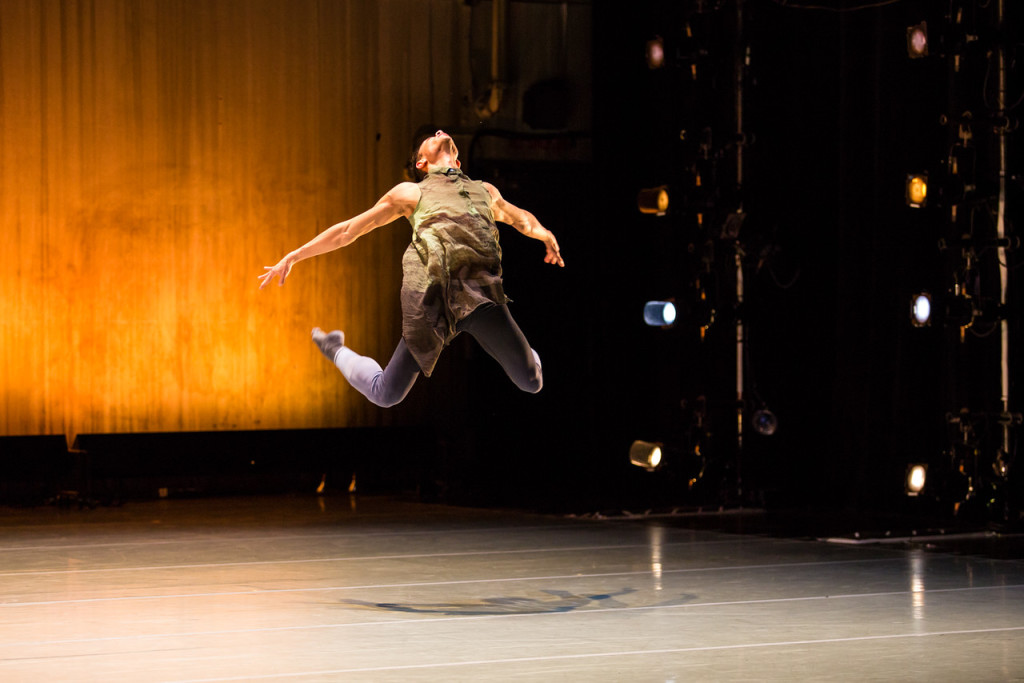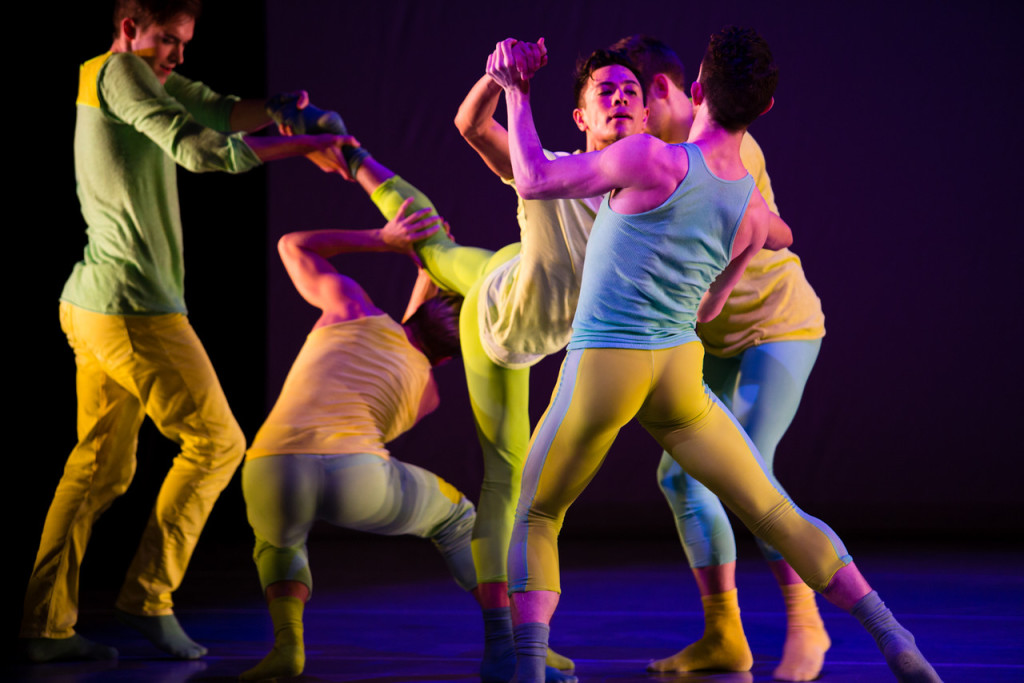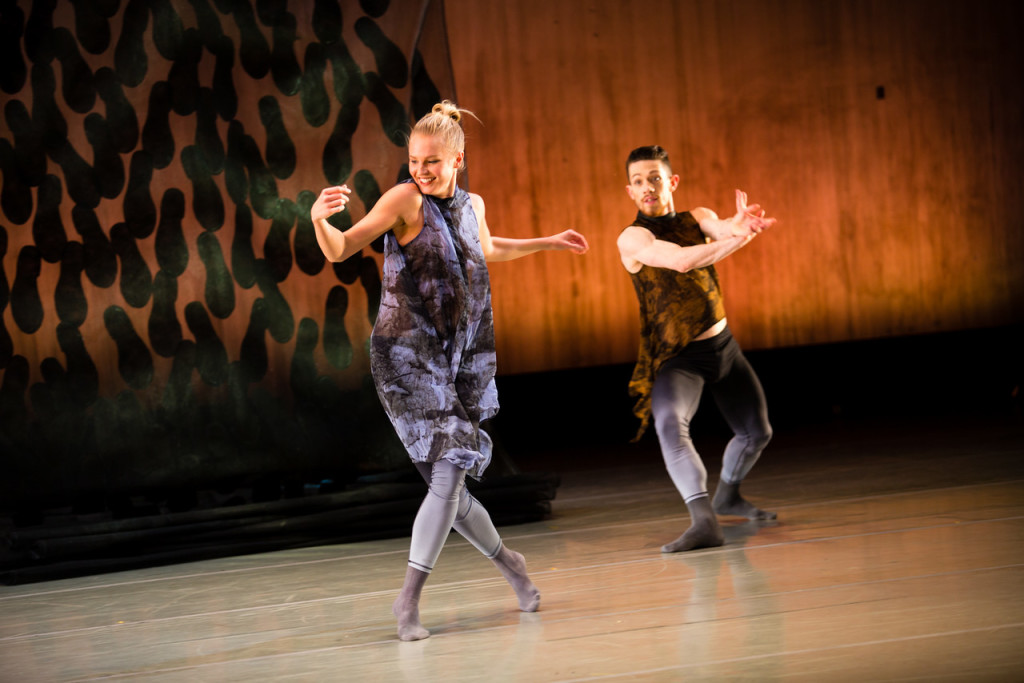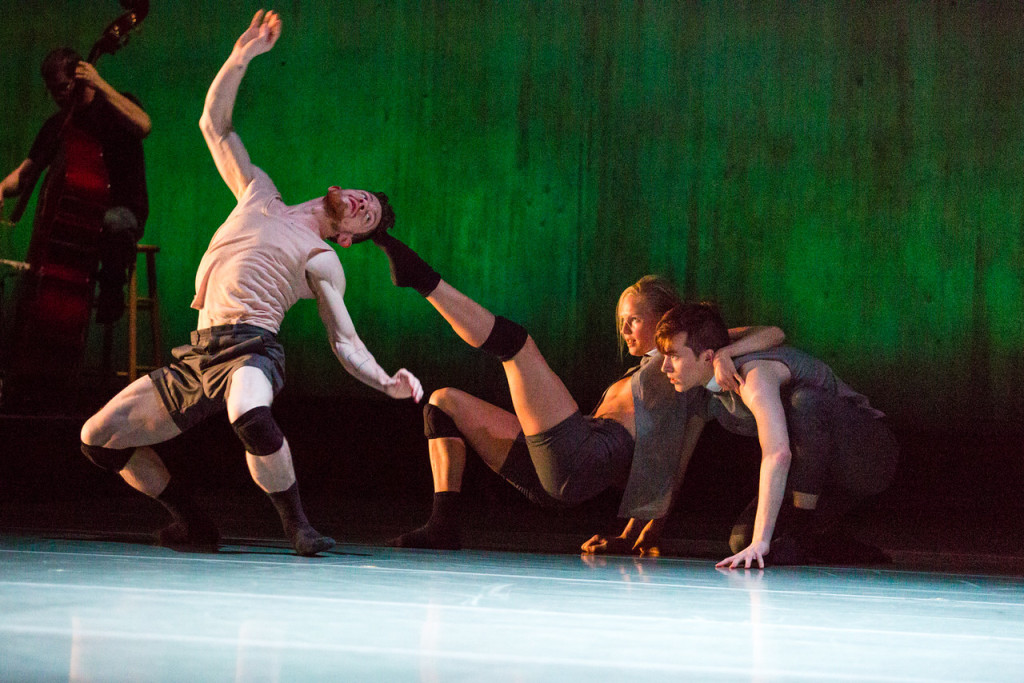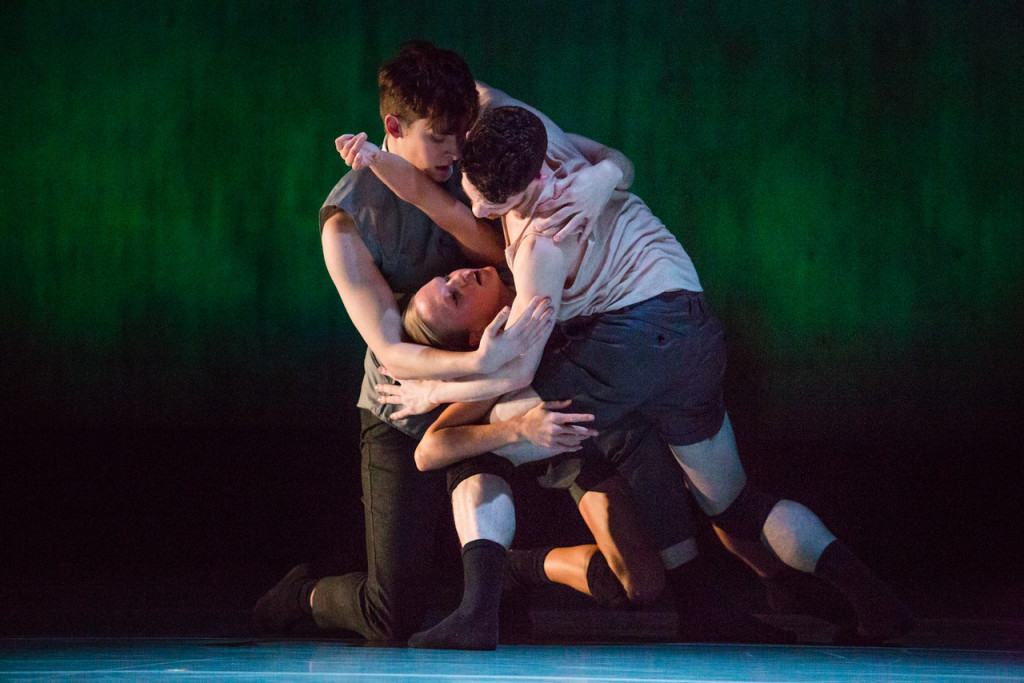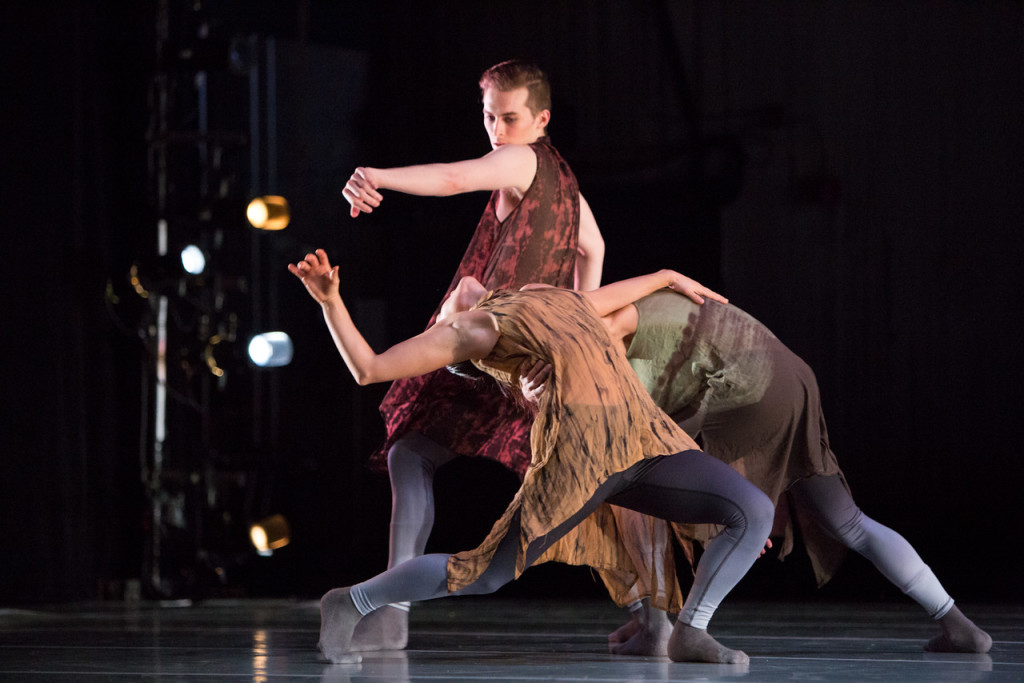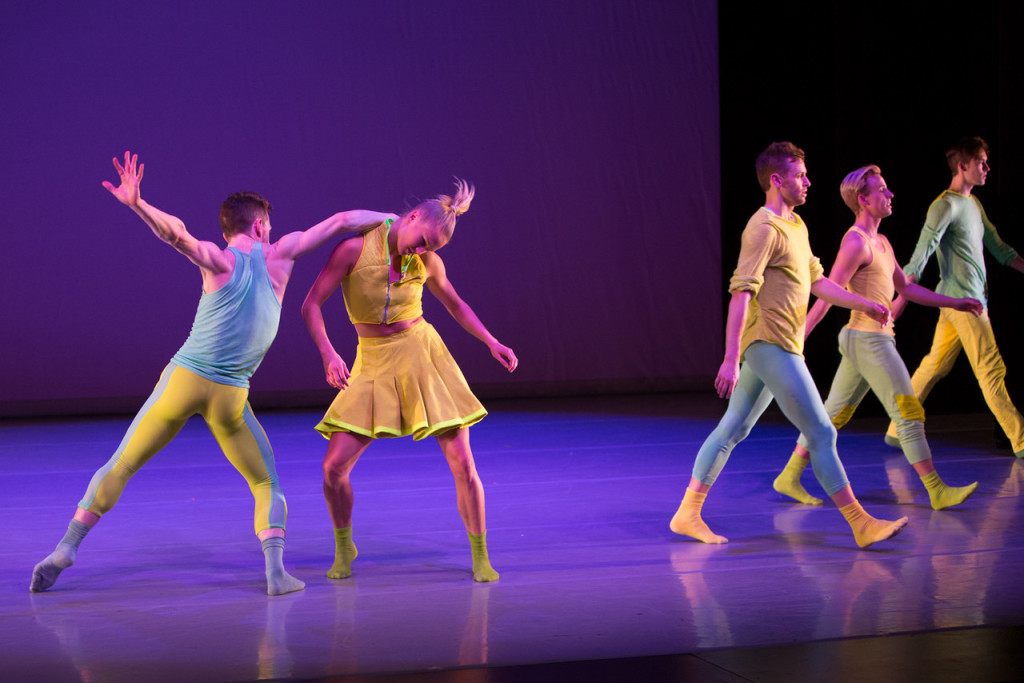Is there a story? Are there characters? What is communicated?
Curiosity and a palpable tension fill the air when some form of the question “What was that about?” is asked at Whim W’Him after-show discussions. On one end of the spectrum is the certainty that a definite theme or narrative underlies all the work of choreographers, who should therefore be able, in theory at least, to articulate, in a clear-cut abstract or synopsis, what a work is about. Significance in this view resides firmly in the mind of the author/choreographer.
At the spectrum’s other end is a belief in what a writing instructor of mine used to call “multiplicity of meaning.” It is the conviction that every aspect of significance is up for grabs. In other words, not just choreographers but dancers, and not merely artists but the audience (as well as other contributors to the production, like musicians, lighting designers and costumers, or interpreter/translators, like photographers and bloggers)
all forge together the meaning of a piece. In this view, then, what a work of dance art signifies really is determined by a group or social process, of which the choreographer’s intention is merely a part.
In earlier eras, and in more traditional ballet contexts, the former attitude is prevalent, whereas among devotees of contemporary dance, it’s the latter. These tendencies still seem to hold true, despite the blurring nowadays of old classical/modern distinctions.
Wherever you place yourself along this continuum, there really is no absolute answer; both approaches contain truth about the art of dance. Good choreographers do have something in mind, whether they can—or will—verbalize it or use dance as their only medium. Even if a piece is created from dancer-generated movement, the choreographer combines the elements and shapes the final form.
At some point in one of the after-discussions, I said something about dance being a language in itself—we’re so used to words, books, texting, we don’t think about how much is conveyed by body language even when we aren’t dancing. (Or, to use George Balanchine’s more succinct words, “Much can be said in movement that cannot be expressed by words.”}
The act of communicating via dance is multi-layered, involving several sorts and stages of communication. The ideas of the choreographer only come to fruition via work in the studio with dancers. “It’s blurry and foggy at the beginning,” Olivier said. “I have an end goal, but it develops with the dancers because of who they are.”
Part of the meaning of “whim” in the company’s name surely refers in a light-hearted way to this complex process. No matter how clear of concept, particular about steps and exacting in execution a choreographer may be, it is the fluid interaction of individual quirks, impulses and understandings that defines the ultimate form of a work.
In contemporary groups, dancer input at all levels looms larger than in companies of classical bent. A lot of what makes Whim W’Him its special and particular self is, according to Olivier, “finding the dancers that will inspire.” He paused, smiling, and said, of the company’s 7 unique personalities and diverse body types, “You wouldn’t put them in a corps of Swan Lake.” And Justin noted, “That’s the beauty of contemporary dance—our work is not just to learn and repeat steps. What’s important is what you [the viewers] take away.”
As the Q&A sessions showed, the dancers have their own ways of taking in and processing what a choreographer is after. One questioner wondered if the dancers “took on some character?” Mark replied, “The dancers are figuring out what they’re saying underneath. Each dancer finds his/her own way. They’re very intuitive people.”
Referring to Mark’s piece, Patrick commented, “Relationships emerge, it’s a constant community.” A particular duet might become a best friend or a brother/sister relationship, true to life in that moment, as in Patrick and Tory’s playful interaction toward the end of Mark’s piece.
The deeply related issue of story is a fascinating one. Balanchine, the great neo-classicist who delighted in making plotless ballets that were physical embodiments of the music, deplored the use of the word “abstract” to describe his creations. “Two dancers on the stage are enough material for a story,” he said. “For me, they are already a story in themselves.” But a story that is set down in program notes is only one kind of narrative.
Several of the dancers talked about the stories they tell themselves to bring coherence and continuity and aid memory in the dancing of a piece. “We often get little direction [about a story line or theme],” Justin said, “and we don’t discuss our individual narratives with each other. We each have very unique journeys. Every piece we share, but we rarely talk about what we feel or go through.” Added Tory, to the questioner in the audience, “I don’t think we can tell each other, so we can’t tell you.” Yet when someone asked her about the brief topless moment in Dominic’s piece, though, she did say that to her it feels “maternal,” and added, “We wear very little clothing all day in rehearsal and we’re touching each other all day, it’s very natural.” A fine case in point of there being a host of possible interpretations of a given scene or piece.
“With 3 choreographers, there are 3 languages,” Tory continued. “They’re different humans with different languages, who Olivier brings in.” And the dancers use those languages to express what they themselves , as well as the choreographers, have to say.
One of the after-discussions concluded with an interesting exchange about the universality of dance. Dominic mentioned how he had 500 ideas, and that they continued to evolve, “even yesterday afternoon,” but that still, “we could take the program anywhere in the world.”
“No, not necessarily,’ Mark interjected. “In Korea or other developing nations, our work would be seen as Western—it would be understood as Western privilege.”
Olivier countered, “But we could dance to one another instead of speaking with words. We’d all dance differently, but we’d understand something.”
And Mark replied, enigmatically, “Yeah…”
